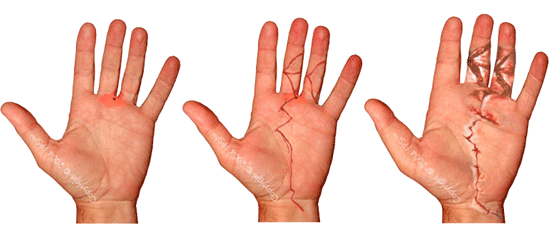High-pressure injection injuries are injuries caused by the high-pressure injection of oil, grease, solvents, water, or even air into the body. The most common causes of these injuries are grease guns, paint sprayers, and pressure washers, but engine fuel injection systems and leaks in hydraulic lines can also cause these injuries.
Direct contact with the skin is not necessary to cause an injection injury and infiltrate tissue. These injuries can be difficult to recognise, often appearing as a small painless puncture of the skin. However the damage is often internal and severe, requiring emergency surgical intervention. The initial benign appearance frequently causes delays in adequate treatment, often resulting in amputations or death.

Pathophysiology and mechanisms
- Pressure damage – Injected fluid causes traumatic dissection of muscle and tissue. Increased pressure can cause compartment syndrome, ischaemia, and damage tissue.
- Chemical damage and toxicity – Some fluids have cytolytic properties and can cause tissue damage, necrosis, and inflammatory responses. Fibrosis often occurs around the tissues, resulting in restriction of limb function. Some fluids may cause toxicity and poisoning, resulting from infiltration.
- Infection – Infection occurs primarily during injection, however can also result from ischaemia and necrosis.
Signs and symptoms
Indication of a high-pressure injection injury is largely determined through the mechanism of injury. Initial symptoms are mild and often unnoticed, appearing as a small puncture of the skin. Inflammation, pain, and sensory impairment normally occurs within a few hours of injury. The initially mild symptoms lead to a delay of treatment, increasing the risk of permanent complications including amputation, or death.
First Aid
High-pressure injection injuries are surgical emergencies, requiring early recognition and intervention. First aid treatments and interventions are limited due to the nature of the injury and deep penetration of fluid. First aid should instead be focused on recognition and rapid referral for definitive treatment.
- Manage ABC’s
- Early recognition of potential injection injury (Identify fluid)
- Rapid transport to nearest Emergency Department (ED/A&E)
- Tell hospital staff you suspect a high-pressure injection injury
- Take the COSHH data safety sheet with you
Always practice according to national, local, and organisation policies/procedures. This blog post is designed for general informational purposes only and does not constitute professional medical advice.



